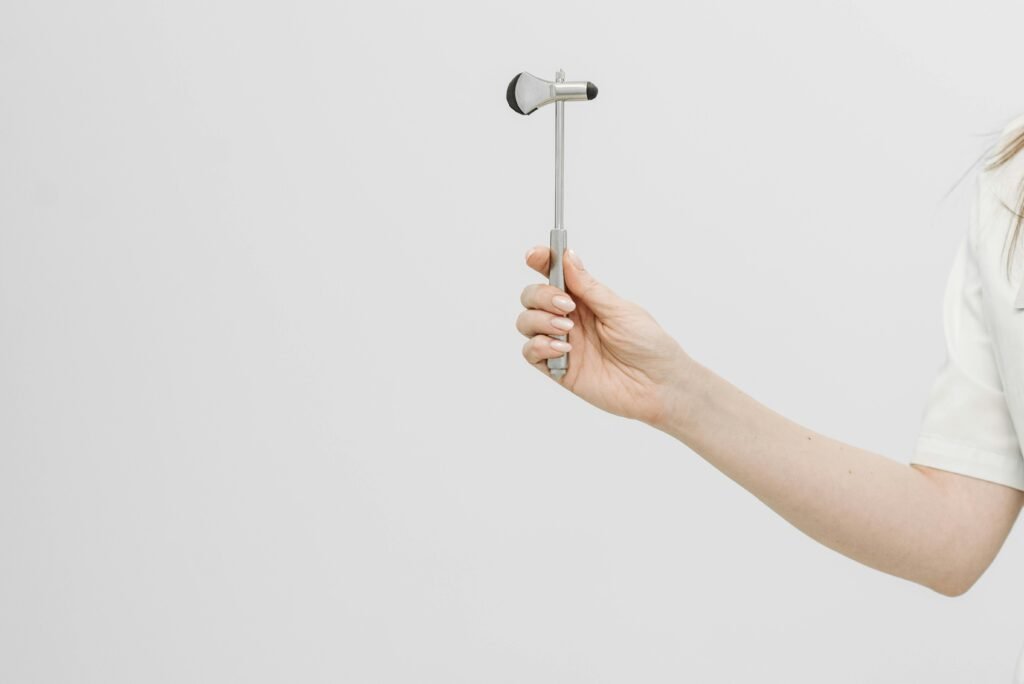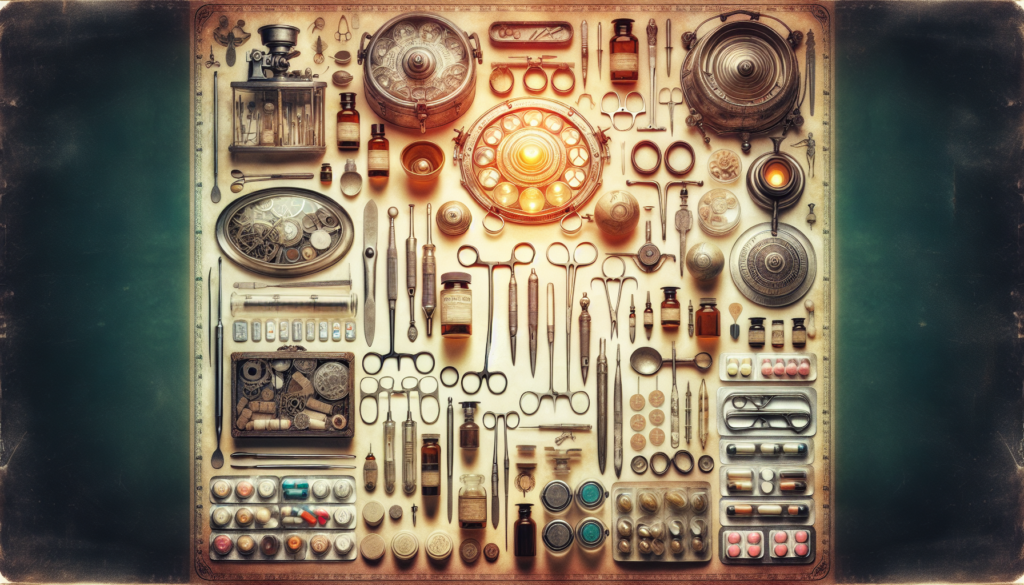Embark on a journey through time at the National Museum of Civil War Medicine, a fascinating cornerstone of Frederick’s rich historical tapestry. Your curiosity will be ignited as you wander the meticulously curated exhibits, each telling the poignant stories of bravery and medical innovation that unfolded during one of America’s most tumultuous eras. As part of your broader adventure with Everything Frederick, this revered institution stands as a testament to the resilience and ingenuity of the human spirit, offering you a profound glimpse into the advances and challenges of Civil War-era medical practices that have shaped modern healthcare.

This image is property of images.pexels.com.
History and Foundations of the Museum
Origins and Founding Vision
You might wonder how the National Museum of Civil War Medicine came to be. It all started with the vision to preserve and share the history of medical innovation during the American Civil War. The founders recognized the importance of commemorating the brave men and women who advanced medical science under the dire conditions of war, and their vision was to create a space that not only remembered their achievements but also educated the public about the progress that arose from necessity.
Location Significance in Frederick, Maryland
The location of the museum in Frederick, Maryland, is no coincidence. Frederick was a pivotal crossroads during the Civil War, witnessing the passage of thousands of troops and serving as a key location for several hospitals. It’s a place steeped in Civil War history, making it an ideal spot for the museum. The streets you walk down, the buildings you see, some have been standing since those times, and they resonate with the history you will encounter within the museum walls.
Evolution of the Museum’s Mission and Scope
Over the years, your museum has expanded its mission. It not only showcases the history of Civil War medical practices but also illustrates the ongoing relevance of many medical principles first developed or significantly improved during the war. The evolving scope of the museum now includes educational programs and research contributions, enhancing its role as both a guardian of history and a facilitator of learning.
Exhibits and Galleries Overview
Permanent Collections and Displays
At the heart of the museum lie the permanent collections and displays. These exhibits are carefully curated to present you with a comprehensive understanding of medical care during the Civil War. From surgical tools to ambulances, the collections tell stories of innovation, bravery, and the relentless pursuit of saving lives.
Rotating and Traveling Exhibits
You will find that the museum also features rotating and traveling exhibits. These temporary displays bring in artifacts, documents, and artwork from other institutions and private collections, giving you fresh perspectives and allowing you to delve deeper into specific aspects of Civil War medicine.
Interactive and Immersive Experience Areas
To truly grasp the realities of medical practices of the period, the museum has developed interactive and immersive experience areas. These spaces invite you to step into the shoes of Civil War surgeons, nurses, and patients, providing a hands-on understanding that reading alone could never fully convey.
Surgical Techniques and Medical Innovations
Advancements in Battlefield Surgery
The museum presents a stark picture of the advancements in battlefield surgery. Amidst the chaos of battle, surgeons developed techniques that would form the foundation of modern trauma surgery. You will learn about amputations performed within minutes and the implementation of life-saving procedures under the most challenging conditions.
Anesthesia and Pain Management
Imagine undergoing surgery without anesthesia. Sounds horrifying, right? The Civil War era saw significant strides in anesthesia and pain management, with the use of chloroform and ether becoming more widespread. These advancements were not only crucial for the comfort of patients but also improved surgical outcomes.
Prosthetic Devices and Rehabilitation
As you explore further, you will see the early prosthetic devices used to aid soldiers who had undergone amputations. The ingenuity and functionality of these prosthetics underscore the beginning of a journey to today’s advanced technology. You will also gain insights into the early stages of rehabilitative care, a concept that was emerging at the time.
Nursing and the Role of Women
Notable Female Medical Personnel of the Civil War
The museum honors women who played pivotal roles in Civil War medicine, including nurses like Clara Barton and Dorothea Dix. You will discover stories of their courage, dedication, and how they broke barriers in a field dominated by men.
Development of Nursing as a Profession
As you trace the development of nursing, it’s evident that the Civil War was a turning point for the profession. The necessity of organized care led to more structured training and roles for women in medicine, paving the way for modern nursing.
Impact on Future Generations of Women in Medicine
The contributions of these women had profound effects on future generations. The Civil War served as a catalyst for women entering the field of medicine, and this legacy is celebrated within the museum’s walls, inspiring visitors to recognize the progress made and the potential for future advancements.

This image is property of images.pexels.com.
The Importance of Sanitation and Hygiene
Combatting Disease in Camps and Hospitals
One of the gravest challenges during the Civil War was disease. It claimed more lives than battle wounds. The museum’s exhibits emphasize the importance of sanitation and hygiene, showcasing how practices like isolating infectious patients and improving camp cleanliness saved countless lives.
Innovations in Sanitation Practices
As you peruse the displays, you will discover the innovations implemented to combat disease outbreaks, including the use of disinfectants and the establishment of more effective waste management systems. These significant changes marked the beginnings of infection control.
Long-term Effects on Public Health Policies
The sanitation practices that originated on the battlegrounds and in the hospitals influenced public health policies long after the war ended. The museum helps draw connections between these historical innovations and the evolution of modern public health standards.
Life and Death on the Battlefield
Medical Logistics during Civil War Battles
Understanding medical logistics during the Civil War offers a fascinating glimpse into the past. The museum details how supplies and personnel were mobilized, the organization of field hospitals, and the daunting challenge of treating mass casualties.
The Role of Field Hospitals and Triage
Field hospitals and the concept of triage were crucial in managing the overwhelming number of wounded soldiers. The museum provides insights into how decisions were made and how these practices have influenced modern emergency care.
Mortality Rates and Post-Mortem Care
With high mortality rates, post-mortem care was an essential, though often overlooked, aspect of Civil War medicine. The museum respectfully addresses this topic, educating visitors on the handling of the deceased and the impact of the war on families and communities.

This image is property of images.pexels.com.
Ambulance Corps and Transportation
Creation and Evolution of the Ambulance Corps
The formation of the Ambulance Corps was a milestone in military medicine. The museum takes you through its creation and how it revolutionized the evacuation of wounded soldiers from the battlefield to places where they could receive care.
Challenges in Transporting the Wounded
Transportation of the wounded was rife with challenges, including difficult terrain and the need for speed. Exhibits highlight the ingenuity and determination that led to improved ambulance designs and more efficient transport methods.
Legacy of Civil War Transport in Modern EMT Practices
Modern emergency medical services (EMS) owe much to the Civil War Ambulance Corps. You’ll learn about the lasting impact these early medical transport systems have had on the ambulances and EMT practices we rely on today.
Education and Research Contributions
Museum’s Role in Historical and Medical Scholarship
The museum is not just a passive repository of artifacts; it is an active participant in historical and medical scholarship. Its collections serve as a resource for researchers globally, contributing to a deeper understanding of this period in medical history.
Collaborative Projects and Academic Partnerships
Through collaborative projects and partnerships with academic institutions, the museum serves as a nexus for the exchange of knowledge. These relationships foster scholarly work and bring new interpretations and findings to the public.
Educational Programs and Workshops
With a variety of educational programs and workshops, the museum is dedicated to learning for all ages. Whether it’s a school group or an individual with a keen interest in history or medicine, the museum provides engaging opportunities to learn and discover more about Civil War medicine.

Living History and Reenactments
Scheduling and Attending Live Events
Keep an eye on the museum’s calendar for live events and reenactments. These scheduled activities offer an immersive experience, allowing you to witness history unfold before your eyes.
Educational Value of Historical Reenactments
Historical reenactments are more than just entertainment; they serve an educational purpose. Through these events, you can gain a richer understanding of the past and appreciate the complexities of Civil War medicine in a tangible way.
Participation and Engagement with the Public
What makes living history events special is the participation and engagement they encourage. You’re invited to interact, ask questions, and be a part of the learning process, which enhances the overall experience and makes history come alive.
Planning Your Visit
Utilizing ‘Everything Frederick’ for Trip Coordination
To plan your visit to the museum, consider using ‘Everything Frederick’ as a guide for trip coordination. This resource will help you pinpoint events at the museum along with other attractions, restaurants, and local happenings during your stay in Frederick.
Combining the Museum Visit with Other Local Attractions
Frederick, Maryland, is filled with charm and history, so why not combine your museum visit with other local attractions? You could explore the historic downtown, visit nearby battlefields, or enjoy regional cuisine, maximizing your experience in this fascinating city.
Tips for a Fulfilling Museum Experience
To make the most of your visit to the museum, here are a few tips:
- Allow plenty of time to explore the exhibits and galleries without rush.
- Consider taking a guided tour to gain expert insights.
- Wear comfortable shoes, as you’ll likely be on your feet for a while.
- Be prepared for a moving experience. Some of the stories and exhibits are quite impactful.
The National Museum of Civil War Medicine offers a unique window into medical history and the human experience during one of the most tumultuous times in American history. Your visit will be educational, thought-provoking, and, undoubtedly, memorable.

